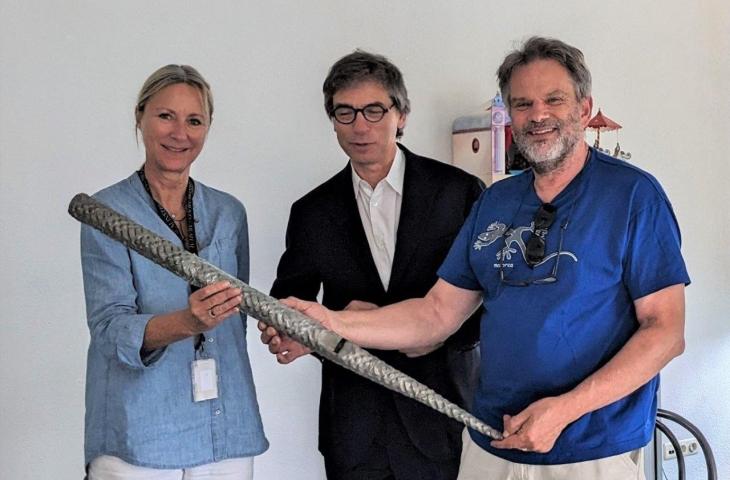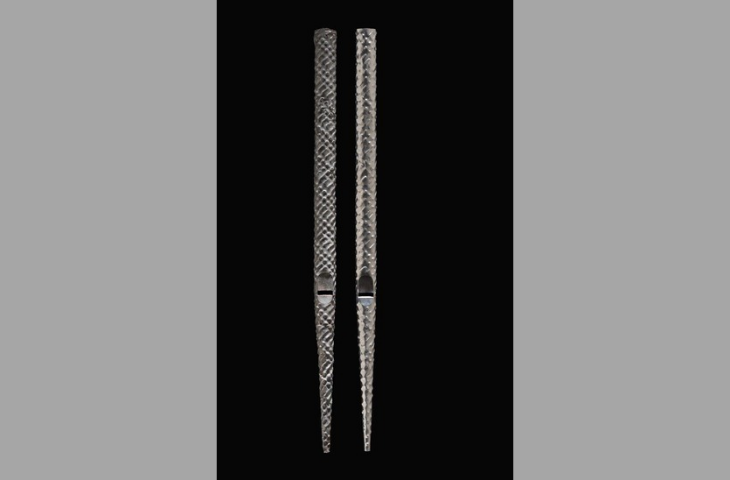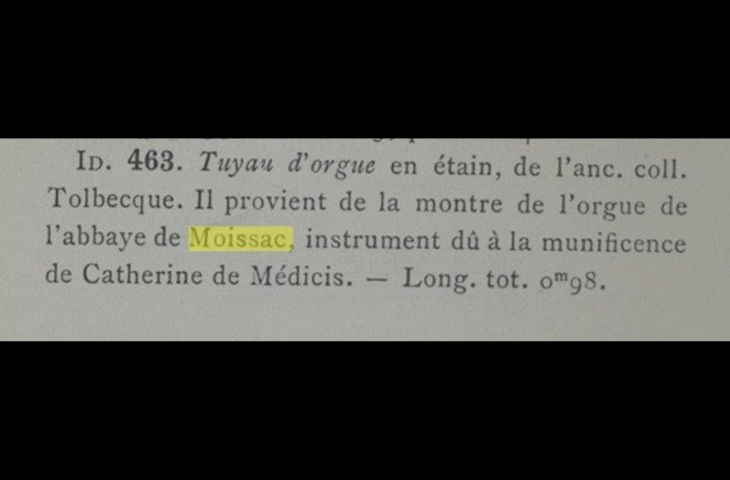August 2023
Fig.1

Restitution of the pipe to the MIM by Wilfried Praet (right), in the presence of Pascale Vandervellen (curator keyboards, left) and Bruno Verbergt (director a.i., middle)
Fig.2

The Moissac organ pipe (right) and its copy made by Wilfried Praet (left)
Fig.3

Extract from the descriptive and analytical catalogue of the instrumental museum of the Royal Conservatory of Music in Brussels
Fig.4

The Moissac organ pipe
The Return of a Missing Organ Pipe
On 21 June 2023, organ builder and organologist Wilfried Praet returned to the MIM an organ pipe that had been missing from the inventory for many years (fig. 1). He had received it from an enthusiastic listener after a concert and had made a copy of it (fig. 2). At first, Wilfried Praet knew nothing about its provenance. When he began cleaning the pipe, he discovered the inventory number 463 written on the mouthpiece.
He then made the connection with the description found in the Catalogue descriptif et analytique du musée instrumental du Conservatoire Royal de musique de Bruxelles, compiled by the museum’s first curator, Victor-Charles Mahillon (1841–1924):
« 463. Tuyau d’orgue en étain de l'anc. coll. Tolbecque. Il provient de la montre de l'orgue de l'abbaye de Moissac, instrument dû à la munificence de Catherine de Médicis », which can be translated as:
‘463. Tin organ pipe from the former Tolbecque collection. It comes from the façade of the organ of Moissac Abbey, an instrument made possible by the munificence of Catherine de’ Medici’ (fig. 3).
A Relic from the Moissac Abbey Organ
The pipe is made of embossed tin (fig. 4). With an acoustic length of approximately 580 mm and an external diameter of around 48 mm, it corresponds, according to Wilfried Praet, to a C or C♯ pipe (A = 440 Hz). Originally, it was part of the organ’s façade, built in 1665 for Moissac Abbey by Jean Haon (John Hew), an English organ builder active at the time in southwest France.
When Aristide Cavaillé-Coll (1811–1899) "modernised" the Moissac organ in 1863, giving it 24 stops, the original pipes were discarded. One of them was acquired by the cellist, erudite collector, and instrument maker Auguste Tolbecque (1830–1919), whose collection of early instruments was purchased by the MIM in 1879.
Text: Pascale Vandervellen